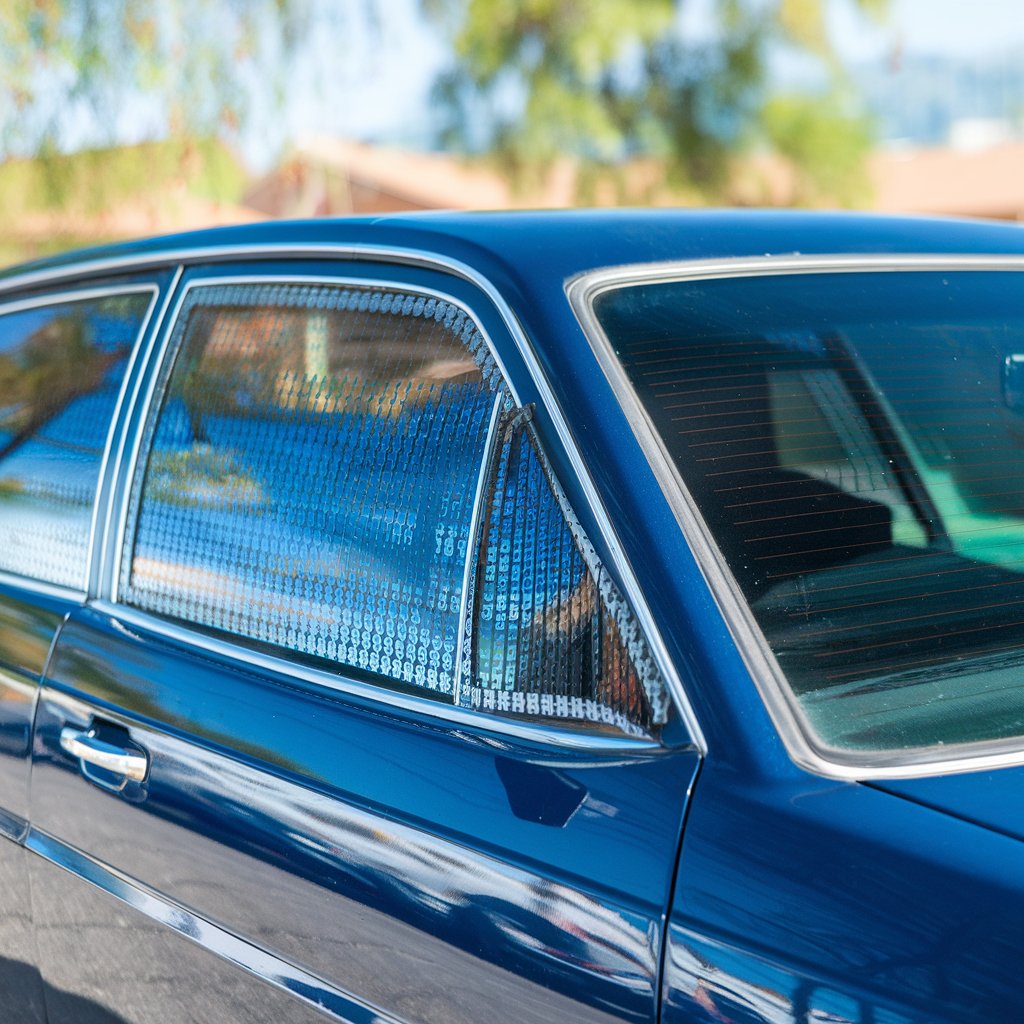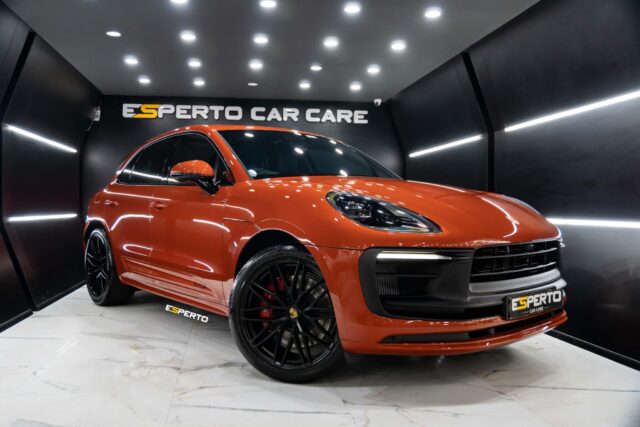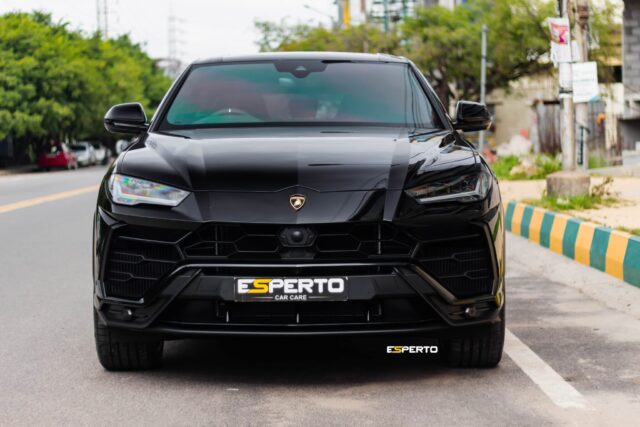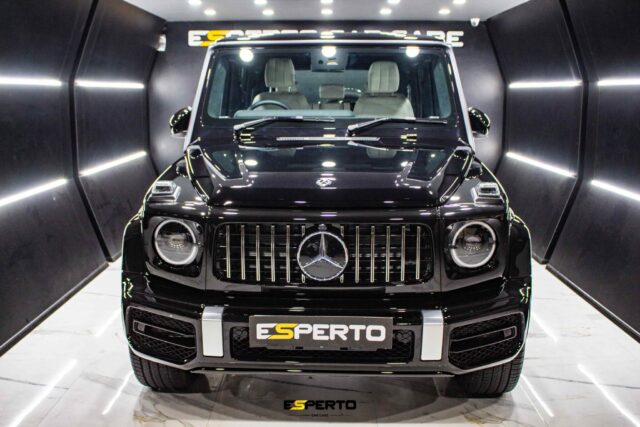Solar control film is a sophisticated solution that transforms your car’s interior environment by effectively managing heat, UV exposure, and glare. It utilizes advanced technology to reflect solar energy, maintain cooler cabin temperatures, and safeguard against upholstery damage. This enhancement not only increases driving comfort but also optimizes the vehicle’s energy efficiency. Essential protection with sun control film ensures that both passengers and interiors are shielded from harmful solar effects. With various film options available, each offering unique benefits, one might wonder how to choose the ideal fit for their personal needs.
Key Takeaways
- Solar control film reduces interior temperatures, enhancing driving comfort and preserving the car interior.
- It blocks up to 99% of UV rays, protecting upholstery from fading and cracking.
- The film lowers air conditioning strain, boosting vehicle energy efficiency.
- Reflective properties minimize glare, improving visibility and driving safety.
- Advanced film technology maintains interior privacy without compromising natural light.
What is Solar Control Film and How Does it Work?
Solar control film is a sophisticated material designed to enhance vehicle comfort by regulating interior temperatures and blocking harmful UV rays.
This advanced technology operates through the science of heat reduction, utilizing microscopic layers that selectively filter solar energy.
Available in various types, each film offers unique benefits tailored to different preferences and environmental conditions.
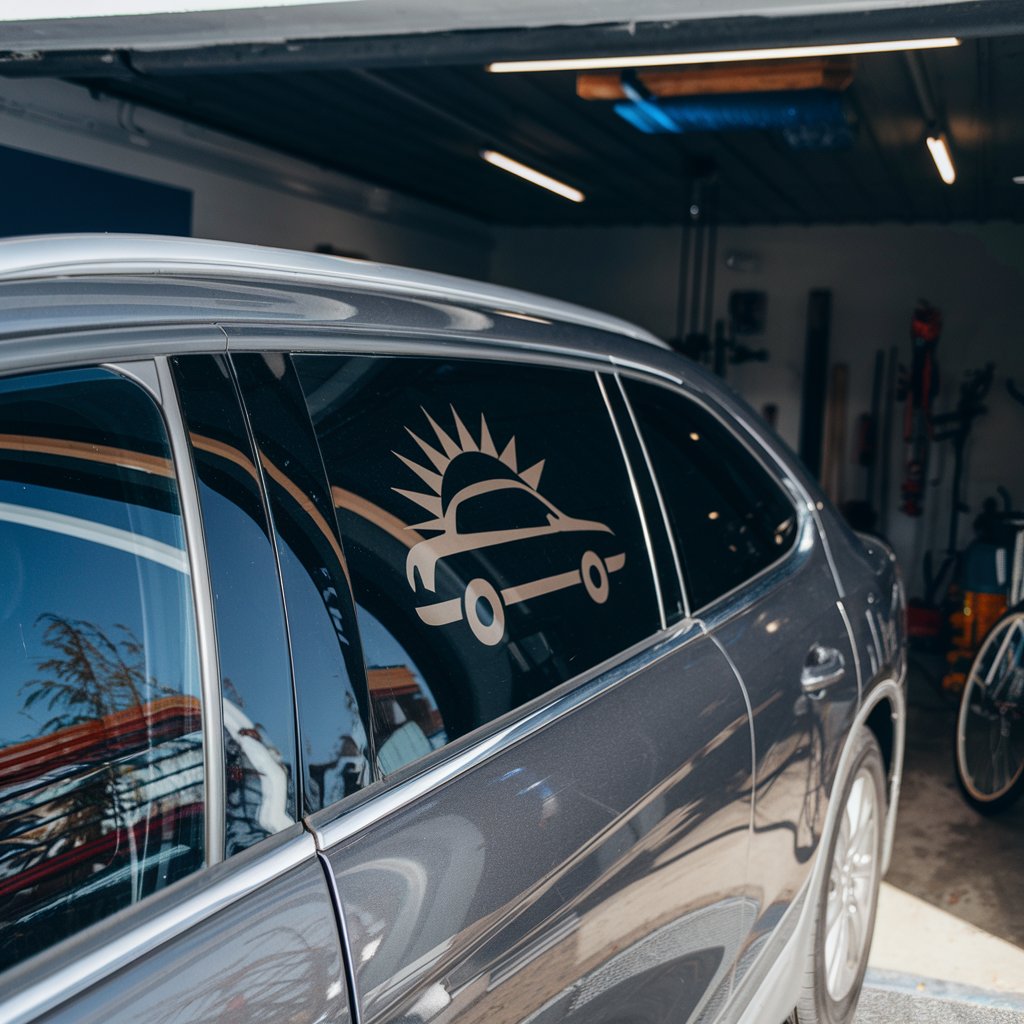
Understanding Solar Control Technology
How does solar control film transform a car’s interior environment? By integrating advanced technology, solar control film acts as a barrier against solar energy.
Automotive window films are designed to reduce heat and harmful UV rays entering the vehicle. These films provide UV protection and heat control by reflecting and absorbing sunlight.
Reflective films, a type of solar control film, are particularly effective at diverting solar energy, thereby maintaining a cooler interior. When installed, these films minimize the oppressive heat and protect interiors from UV-related damage.
Through meticulous engineering, solar control films enhance comfort and guarantee the longevity of interior components. This integration of technology and innovation highlights the essential role of solar control films in automotive environments.
The Science Behind Heat Reduction
The previous exploration of solar control technology sets the stage for a deeper understanding of the mechanisms that facilitate heat reduction in automotive interiors.
Solar control window film operates by reflecting solar heat and minimizing heat and glare that enter through car windows. This automotive film is engineered with advanced materials that selectively filter out harmful UV rays while allowing natural light to pass through.
The reflective properties of the solar film play a pivotal role in reducing heat gain, making the cabin more comfortable and energy-efficient. By installing window film, drivers can achieve a significant decrease in interior temperatures, thereby protecting upholstery and reducing reliance on air conditioning.
This intricate balance of technology and design guarantees enhanced comfort through effective solar heat management.
Types of Solar Control Window Film
In the domain of automotive enhancements, solar control window film stands out as a pivotal innovation that merges functionality with protection. This technology is available in various types, each designed to serve distinct purposes.
Tinted window films are popular for their ability to control heat and offer effective glare control. Meanwhile, UV window films protect by blocking harmful ultraviolet rays, safeguarding the car interior from fading. Reflective solar films serve as efficient heat control windows by reflecting sunlight, thereby maintaining cooler temperatures inside.
Hybrid options combine features from multiple types, offering thorough benefits. Ultimately, these films help reduce energy consumption by lessening the need for air conditioning, making them a smart investment for car owners seeking enhanced comfort and protection.
How Does Solar Film Protect Your Car’s Interior?
Solar control film serves as a protective barrier against the detrimental effects of ultraviolet rays, greatly reducing the risk of sun damage to a vehicle’s upholstery.
By filtering out these harmful rays, the film not only preserves the aesthetic quality of the interior but also contributes to maintaining a cooler cabin temperature.
This technology guarantees that car interiors remain comfortable, safeguarding both the vehicle’s longevity and the occupants’ well-being.
Protection Against Harmful UV Rays
While often overlooked, the presence of harmful ultraviolet (UV) rays poses significant risks to a car’s interior. Prolonged exposure can lead to sun damage, causing discoloration and degradation of materials.
Applying solar control film for windows is an effective solution to mitigate these effects. This window film for UV protection is a thin layer that blocks up to 99% of UV rays, thereby preserving the car’s interior.
Solar control film helps not only safeguard against the harmful impact of solar radiation but also control glare and enhance driving comfort. The film reduces the intensity of sunlight entering through the windows, and these films provide a protective shield that is essential for maintaining the vehicle’s interior longevity and appearance.
Preventing Sun Damage to Upholstery
Even though drivers may not always notice, the sun’s relentless rays can wreak havoc on a car’s upholstery over time, causing fading, cracking, and deterioration.
A strategic solution is the installation of solar control window film, which acts as a barrier against harmful UV radiation. This reflective window film effectively reduces the amount of sunlight penetrating the vehicle, thereby preserving the integrity and appearance of the car’s interior.
By utilizing solar reflective technology, such films help control the damaging effects of the sun. The benefits of solar control windows extend beyond mere aesthetics; they enhance the longevity of the upholstery.
Installing window film is an investment in maintaining a pristine car interior, shielding it from the relentless assault of solar exposure.
Maintaining a Cooler Temperature Inside
As temperatures rise, the interior of a vehicle can quickly become uncomfortably hot, making it essential to find effective solutions for heat management. Solar control films are an excellent solar solution, as they are designed to reject heat and maintain a cooler environment inside. This self-adhesive polyester film effectively reduces the solar energy penetrating through windows. A range of window films offers various options tailored to specific needs. The benefits of window film include improved comfort and reduced reliance on air conditioning, as well as extended lifespan of the car’s interior. Solar control films can help maintain a pleasant temperature, making every drive more enjoyable.
| Emotion | Without Film | With Solar Control Film |
|---|---|---|
| Discomfort | High | Low |
| Temperature | Intense | Moderate |
| Energy Usage | Increased | Decreased |
| Interior Wear | Rapid | Slow |
| Enjoyment | Minimal | Enhanced |
What Advantages Come with Installing Solar Window Film?
Solar window film offers a suite of advantages that considerably enhance the driving experience and vehicle longevity.
Mitigating heat and glare not only boosts comfort but also reduces the strain on air conditioning systems, thereby improving energy efficiency.
Additionally, reflective films augment privacy, shielding passengers from prying eyes while maintaining a sleek, modern look.
Reducing Heat and Glare for Comfort
When temperatures soar, the advantages of installing solar window film become particularly evident, offering a significant reduction in both heat and glare that enhances passenger comfort.
Solar control window films are thin, multi-layered materials designed to reflect and absorb solar energy. They work by filtering out a substantial portion of the sun’s infrared and ultraviolet rays, thereby decreasing cabin temperature.
Various types of window film are available, with some exterior films specifically engineered to maximize heat rejection. These films offer a barrier against intense sunlight, maintaining a cooler interior environment.
For those looking to buy solar control window film, understanding how these films help mitigate heat and glare is essential. This not only improves driving comfort but also reduces the strain on air conditioning systems.
Enhancing Privacy with Reflective Films
Reflective films serve a dual purpose by not only regulating interior temperatures but also enhancing privacy for vehicle occupants. This type of privacy window film offers several advantages.
- Versatile Film Types: With various films available, users can select window film tailored to their specific needs, whether it’s enhanced privacy.
- Enhanced Privacy: These films come with a mirrored finish that prevents prying eyes from peering into the vehicle while maintaining visibility from the inside.
- Durability and Protection: High-quality window film products offer long-lasting performance and protection against UV rays, ensuring both privacy and interior preservation.
Improving Energy Efficiency
Many modern vehicles are equipped with solar window film, an innovation that considerably bolsters energy efficiency. This type of film reduces the vehicle’s interior temperature by reflecting solar heat, minimizing the reliance on air conditioning systems.
By integrating window film technology, car interiors benefit from the same principles used in car film applications, effectively maintaining cooler environments.
Additionally, the integration of security window features guarantees that the film will enhance not only energy efficiency but also occupant safety.
Ultimately, solar window film represents a strategic advancement in sustaining comfortable and eco-friendly driving experiences.
How Can You Select the Right Solar Control Window Film?
Selecting the ideal solar control window film requires careful evaluation of various types, each offering distinct advantages in performance and aesthetics.
Consideration should be given to the film’s capability to block harmful ultraviolet rays while effectively reducing heat, ensuring maximum protection and comfort for the vehicle’s interior.
Evaluate Different Types of Window Film
When considering how to choose the right solar control window film for a vehicle, it is essential to understand the various types available, each offering unique benefits tailored to specific needs.
Different films cater to diverse preferences, from aesthetics to performance.
- Dyed Films: These provide a non-reflective finish, enhancing privacy without greatly altering the appearance of the vehicle. They absorb heat rather than reflect it.
- Metalized Films: Composed of tiny metallic particles, these films offer enhanced durability and superior heat rejection but may interfere with electronic signals.
- Ceramic Films: Known for their high-tech composition, they excel in blocking glare and heat while maintaining signal clarity, albeit at a higher cost.
Each type has its advantages, making the selection process vital for ideal interior protection and comfort.
Consider UV Protection and Heat Reduction
Understanding the importance of UV protection and heat reduction is essential in selecting the right solar control window film for a vehicle. UV rays can degrade a car’s interior, causing fading and cracking in upholstery and dashboards. An effective window film can block up to 99% of harmful UV radiation, safeguarding the vehicle’s interior aesthetics and value.
Additionally, heat reduction is vital for maintaining comfort during sweltering summers. Advanced films are engineered to reflect infrared rays, greatly lowering cabin temperatures and reducing the strain on air conditioning systems.
How to Install Solar Control Window Film?
Installing solar control window film can be a rewarding project, whether one opts for a DIY approach or seeks the precision of professional services.
DIY enthusiasts benefit from tips and tricks that simplify the process, yet they must be wary of common pitfalls that can compromise the film’s effectiveness.
On the other hand, professional installation offers expertise that minimizes errors, ensuring ideal performance and longevity of the film.
DIY Installation Tips and Tricks
For car enthusiasts who are enthusiastic to enhance their vehicle’s interior with solar control film, mastering the art of DIY installation can be a rewarding endeavor. This process combines technical precision with creative satisfaction.
Key steps to guarantee success include:
- Preparation: Thoroughly clean the windows using a lint-free cloth and a non-ammonia-based cleaner. This removes dirt and oils that could interfere with adhesion.
- Measurement and Cutting: Accurately measure the window dimensions and cut the film slightly larger. This allows for precise trimming once applied.
- Application: Use a squeegee to apply the film, starting from the top and working downward. This method helps eliminate air bubbles and guarantees a smooth finish.
With patience and precision, DIY installation can transform a vehicle’s interior while maximizing comfort.
Benefits of Professional Installation
Choosing professional installation of solar control film reveals a host of advantages for discerning car owners.
Certified technicians bring precision and expertise, ensuring a flawless application. They use specialized tools and techniques that minimize bubbles and wrinkles, achieving a seamless finish.
Professionals are knowledgeable about various film types, providing tailored recommendations based on vehicle specifications and owner preferences. Furthermore, professional installers often offer warranties, providing peace of mind and assurance of quality.
They also adhere to local regulations regarding tint levels, preventing potential legal issues. Importantly, professional installation saves time, as the process is completed efficiently.
For car owners seeking ideal functionality and aesthetics from their solar control film, entrusting the task to skilled professionals is a prudent choice.
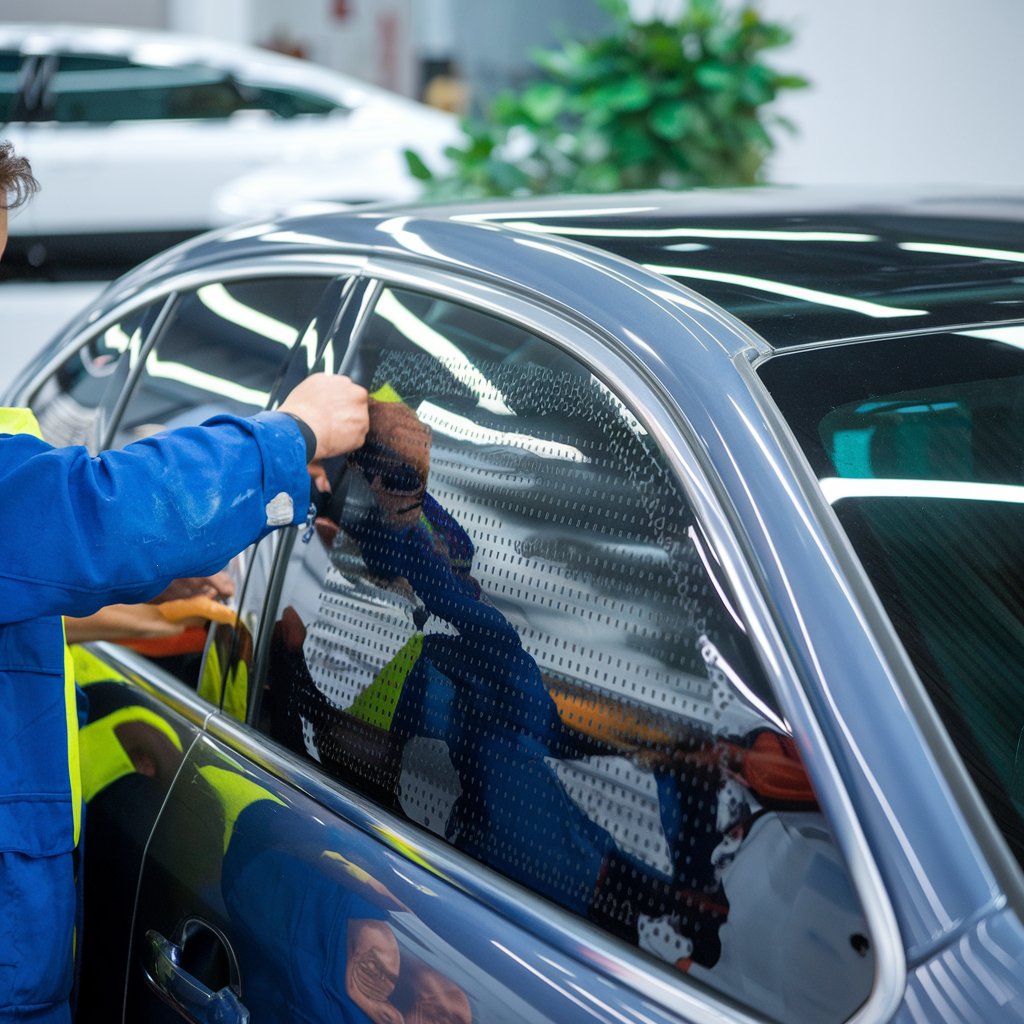
Common Installation Mistakes to Avoid
While professional installation offers numerous advantages, some car owners choose to undertake the task themselves, which can be rewarding yet fraught with challenges.
To guarantee success, it’s vital to avoid common pitfalls.
- Inadequate Surface Preparation: The glass must be meticulously cleaned to prevent dust and debris from causing bubbles and imperfections in the film.
- Incorrect Cutting and Sizing: Precise measurements are essential. An ill-fitted film not only looks unprofessional but also fails to adhere properly, compromising performance.
- Neglecting to Use a Squeegee: Properly using a squeegee eliminates air bubbles and guarantees a tight bond between the film and the glass.
Avoiding these mistakes requires patience and attention to detail, guaranteeing a seamless and professional-looking installation that maximizes the benefits of solar control film.
FAQs about Solar Control Window Film
Steering through the landscape of solar control window film raises key questions about its practicality and longevity.
One common concern is whether the film compromises night visibility, an essential factor for safe driving in low-light conditions.
Additionally, consumers often inquire about the durability and ease of removal of these films, seeking reassurance on the product’s lifespan and flexibility.
Does Solar Film Affect Night Visibility?
How does solar control film impact drivers’ night visibility? Solar control film is designed to reduce glare and heat during the day, but concerns about its effect on night visibility are common.
When considering night driving, the quality and type of film play critical roles. Industry insights reveal that high-quality films are engineered to maintain visibility, even in low-light conditions.
Here are three key factors:
- Film Transparency: Premium solar films often offer high transparency, allowing sufficient light to pass through, consequently not hindering night vision.
- Reflection Rates: Modern films minimize interior reflections, reducing distractions and improving clarity during nighttime driving.
- Technology Integration: Advanced films incorporate nanotechnology to optimize clarity and light transmission, ensuring safety and comfort without compromising visibility at night.
How Long Does Solar Control Window Film Last?
When considering the longevity of solar control window film, one might wonder what factors contribute to its durability and effectiveness over time. Typically, these films, crafted from durable polyester materials, are engineered to withstand the elements, including UV radiation, temperature fluctuations, and daily wear.
The lifespan of a high-quality solar control film can range from 5 to 15 years, contingent upon factors such as installation quality, film grade, and environmental conditions. Shatter Resistant Window Film, in particular, offers added structural integrity by holding broken glass together in the event of impact, further enhancing the film’s protective qualities and extending its service life. Professional installation enhances durability by ensuring a seamless application, reducing potential wear points.
Additionally, manufacturers often provide warranties that reflect the film’s expected lifespan, offering assurance to consumers. Regular maintenance, such as gentle cleaning with non-abrasive solutions, can further extend the film’s performance, safeguarding car interiors against fading and heat.
Can Solar Film Be Removed Easily?
Why is the ease of removing solar film an important consideration for car owners? The ability to remove solar film without damaging windows or leaving residue is vital for maintaining the vehicle’s aesthetics and resale value.
Understanding the removal process involves several technical insights:
- Adhesive Quality: Advanced films use non-permanent adhesives, designed for effortless removal, ensuring no sticky residues remain on the glass surface.
- Professional Removal: Engaging experts can facilitate a seamless removal, utilizing specialized tools and techniques to prevent scratches or damage.
- DIY Approach: With proper tools like heat guns and cleaning solutions, car owners can also undertake film removal themselves, though it requires patience and precision.
Conclusion
In summary, solar control film emerges as an essential enhancement for vehicle interiors, combining technical innovation with practical benefits. Expertly regulating temperature and blocking UV rays not only elevates driving comfort but also extends the lifespan of the car’s interior components. The variety of films available guarantees tailored solutions for privacy and efficiency needs. As a savvy investment, solar control film embodies a fusion of modern technology with everyday utility, offering a robust defense against environmental wear.

